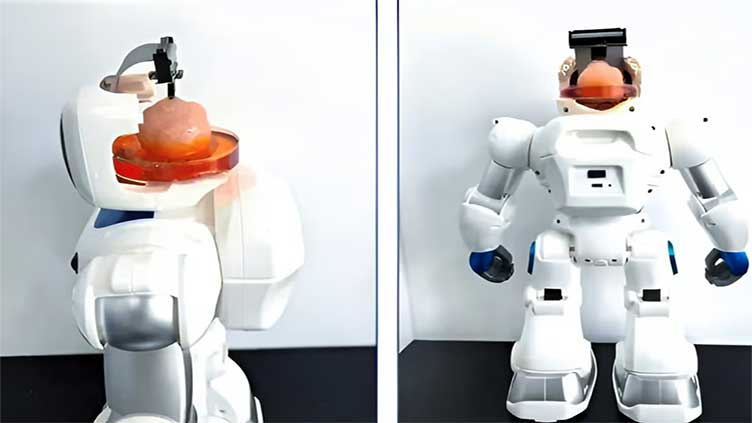Robot with human brain tissue learns how to use arms

Technology
Brain-on-chip exhibited basic human intelligence, researchers say
(Web Desk) - Scientists in China have built a robot capable of performing critical tasks using an artificial brain grown from human stem cells.
The brain-on-chip was able to learn basic tasks, such as moving its limbs, avoiding obstacles and grasping objects, according to the researchers, while exhibiting some intelligence functions of a biological brain.
A team from Tianjin University and the Southern University of Science and Technology fitted the lab-grown brain with a brain-computer interface that allowed it to communicate with the outside world.
“The brain-computer interface on a chip is a technology that uses an in vitro cultured ‘brain’ – such as brain organoids – coupled with an electrode chip to achieve information interaction with the outside world through encoding and decoding and stimulation-feedback,” said Ming Dong, an executive director at the Haihe Laboratory for Brain-Computer Interaction and Human-Computer Integration at Tianjin University.
In order to function, the brain organoids have similar needs to a human brain, including fluid, nutrient lines, temperature control and protective casing.
The researchers claimed the emerging field of brain-on-chip technology would have a “revolutionary impact” by helping develop hybrid intelligence.
The latest breakthrough comes just days after scientists in Japan revealed that they had grafted living human skin onto the face of a humanoid robot in an effort to give it a more lifelike appearance.
The team from the University of Tokyo were able to make the robot smile by fitting the engineered skin tissue with skin-ligament structures.
Beyond displaying human-like emotions, the researchers said the living skin could bring improved sensing capabilities and the ability to self-heal if injured.


